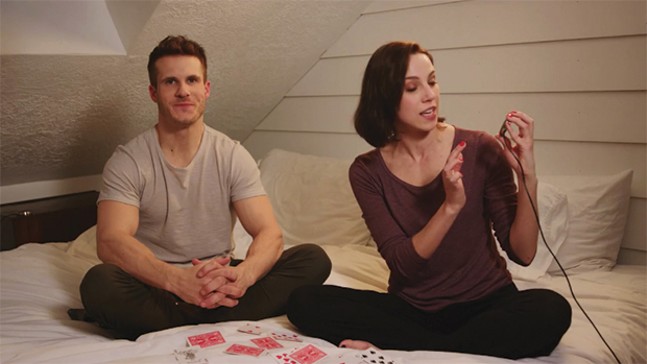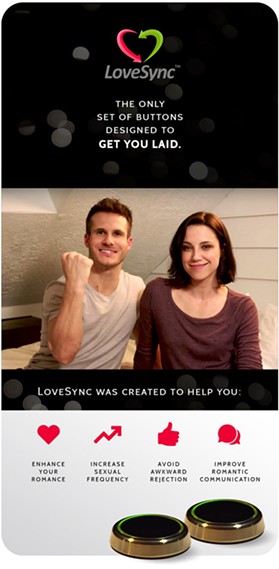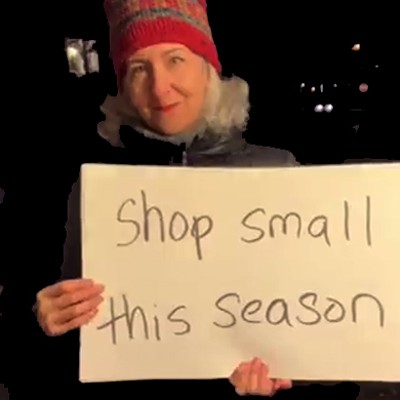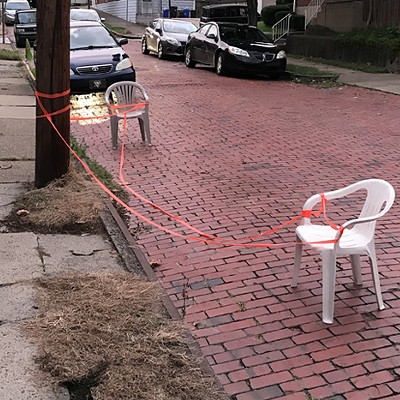Three weeks ago, a Kickstarter campaign launched for a piece of technology aimed at improving couples’ communication about sex. LoveSync promises a solution to mismatched libidos. It offers “an entirely new way to increase your sexual frequency and boost your romantic relationship with the simple press of a button.”
The idea is simple. Each person in a couple places a button on their bedside table, which they press when they are in the mood for sex. If both partners press the button, there is a match and they are alerted that it’s sexy time. If one partner presses the button and the other doesn’t, “no one will be the wiser.”
LoveSync’s claim is that folks will be more likely to assert their desire for sex if they don’t fear rejection; and direct rejection, of course, is impossible if your partner only knows you want to have sex when they are also in the mood.
The Kickstarter campaign met its goal in just two days and has now raised close to $13,000. Despite its momentary popularity, LoveSync is a terrible idea— so bad, in fact, we might as well rename it “The Divorce Button.” It’s a technological solution to an interpersonal or relational problem. Our sexual needs, desires, and insecurities are complex and cannot be easily boiled down to an on/off switch, and glossing over this complexity is likely to deepen the problem.
It’s not inherently a problem in a relationship to have libidos that don’t exactly match up. In fact, it’s a normal situation that partners have to continually negotiate as they both develop and change over time. Partners are not mirror images of each other.
The solution is not to reduce each other to human sex dispensers by eliminating any conversation that may lead to conflict; instead, real solutions lie in working to understand the root of conflicting desires and negotiating compromises that make both partners feel seen and cared for.
In my own marriage, issues of mismatched libido often aren’t about sex drive at all, but rather about how we individually relate to sex. When we are feeling disconnected because of stress or conflict, I often desire sex because sex helps me to bridge emotional distance. But for my partner, sex is something that flows out of emotional connection, and is therefore not possible until we resolve the issues between us.
At times like this, we have had to communicate so that he doesn’t feel pressured into sex that doesn’t feel natural to him, and I don’t feel cut off from the connection I desire. This sometimes involves facing our conflicts head on and taking steps to rekindle our closeness in sexual and non-sexual ways. But hiding behind technology would have prevented us to having the necessary conversations that shed light on this pattern.
This technology reduces sexuality to a yes or a no and doesn’t take into consideration that people want different things at different times. These shifts and conflicts need to be continuously communicated and negotiated, and this can only happen through an openness, which includes vulnerability, even in the face of a possible rejection. Better sex comes from better communication and care and concern for your partner, not fancier technology that protects you from your own feelings.
Interested in reading more on sex and technology? Check out Cyborgology on The Society Pages.
Peepshow Podcast
Peepshow Podcast In Episode 43, we bring you more interviews from the floor of the Adult Video Network (AVN), often called the “Academy Awards of Porn.” We trace the shift in the culture of AVN from its inception in the 1980s to the present.To ground us in its history, we interview legendary performer and educator Nina Hartley, who has been at AVN every year for the last 36 years. She tells us that the event began as an offshoot of the Consumer Electronic Show in Las Vegas, until it broke off into its own convention in the 1990s. She talks about her experiences starting her career in pornography in 1984, and how radically different the landscape is now for up-and-coming performers.
We also interview academic and writer Lynn Comella, author of Vibrator Nation: How Feminist Sex Toy Stores Changed the Business of Pleasure. She laments the diminishing representation of queer and feminist vendors at the expo, and performers on the red carpet.
Lastly, we talk to long-time veteran cam model Miss Lollipop, who discusses the massive shift on the expo floor from conventional porn performers to webcam models. She talks about the early days of camming at AVN, where models set up their own hot spots in order to livestream, to today when cam platforms have invested so heavily in infrastructure that the entire convention floor has shifted to live digital performances.




















